How to Create a Marketing Budget That Works For You, Not an Agency
- Chase McGowan

- Oct 21
- 16 min read
A marketing budget isn't just a line item on a spreadsheet. It's a financial roadmap that should connect every single dollar you spend to a real business result—a new lead, a booked call, a sale. The trick is to build it in a way that funds growth, not just agency overhead.
Build a Budget That Drives Growth, Not Agency Fees

Let's be real. Crafting a marketing budget can feel like you're just throwing money into a black box, especially when a big agency is in the picture. They’ll show you complex spreadsheets and talk a big game, but often, a huge slice of your investment is eaten up by their bloated overhead. Think account managers, fancy offices, and layers of bureaucracy. You end up paying for their structure, not your success.
This guide flips that script entirely.
As a specialized Google Ads consultant, my approach is built on a totally different foundation: efficiency, transparency, and a relentless focus on performance. We aren't building a budget to sustain a massive team; we're building one to directly fuel your growth.
The Specialist Advantage in Budgeting
The core difference really comes down to one thing: alignment. A large agency's fee structure—often a percentage of your ad spend—creates an inherent conflict of interest. Their primary incentive is to get you to spend more, regardless of whether it's actually effective.
My model is simple. My job is to deliver the best possible return on ad spend (ROAS) because my success is tied directly to yours. It’s that straightforward.
This specialist approach completely changes how we think about your budget:
We focus on outcomes. Every dollar gets tied to a specific business goal, like hitting 20 qualified leads a month or maintaining a $30 cost per acquisition (CPA).
We eliminate the fluff. We skip the generic, multi-channel packages that agencies love to sell. Instead, we concentrate your funds on high-intent platforms where your customers are already looking for you.
We maximize efficiency. Without the high overhead, more of your money goes directly into ad spend. This amplifies your reach and makes a much bigger impact.
The differences become pretty clear when you compare how each model prioritizes your investment.
Agency Model vs Consultant Model Budgeting Focus
Budgeting Aspect | Typical Agency Approach (High Overhead) | Specialist Consultant Approach (Efficiency-Focused) |
|---|---|---|
Primary Goal | Spend the allocated budget; justify fees. | Achieve specific business outcomes (leads, sales, ROAS). |
Fee Structure | Often a % of ad spend, incentivizing higher spend. | Flat-rate or performance-based, incentivizing efficiency. |
Allocation | Spread thin across many channels (some ineffective). | Concentrated on proven, high-intent channels. |
Overhead | A significant portion of your payment covers non-ad costs. | Minimal overhead; almost all budget goes to media buy. |
Reporting | Often focuses on vanity metrics (impressions, clicks). | Reports on business-critical metrics (CPA, ROAS, LTV). |
At the end of the day, a specialist helps you see your budget as a precision tool, not a blunt instrument.
The goal isn't just to spend money—it's to invest it intelligently. A budget built with a specialist is a lean, powerful tool designed for one purpose: to generate measurable returns for your business, not to pay for someone else's.
This push for efficiency is more critical than ever. Recent data shows that while marketing budgets have grown to represent 9.4% of company revenue, the growth rate of that spending has slowed down. You can explore more 2025 marketing budget insights from over 11,000 CMOs. This trend hammers home the need for a smart financial plan that avoids paying for unnecessary agency markups. Every dollar has to count.
Calculate Your Foundational Marketing Budget
Before you can decide where to spend your money, you need a realistic starting point. This is where so many businesses get stuck. They often just default to a number that feels right but isn't actually tied to any real business objective.
Let’s move beyond the guesswork and nail down a foundational budget using two proven methods I use with all my clients.
Finding Your Revenue-Based Starting Point
The first, and most common, is the Percentage of Revenue model. It's exactly what it sounds like: you dedicate a specific percentage of your company's total revenue to marketing. Its popularity comes from being simple to calculate, and it naturally scales up or down as your business grows or contracts.
While every business is different, the data shows that marketing budgets have finally stabilized. The average marketing budget now represents 7.7% of company revenue. That said, half of CMOs are still reporting budgets at or below 6%, which tells me the spending environment is still pretty conservative.
So, what does this look like in the real world?
For a business bringing in $500,000 in annual revenue, a conservative 5% budget is $25,000 a year. A more aggressive 10% allocation bumps that up to $50,000.
Here’s a quick breakdown I often share with clients:
Established Businesses (over 5 years): A 5-8% budget is often enough to maintain your market share and keep the growth engine humming along steadily.
Growth-Focused Businesses (1-5 years): Here, 8-12% is more common. You have to invest more to acquire new customers and build that crucial brand awareness.
New Businesses/Startups (under 1 year): It’s not unusual to see budgets in the 12-20% range. This kind of aggressive spending is necessary to carve out your spot in the market.
This method gives you a solid, quantifiable number to work with. But it has a major flaw: it links your budget to past performance, not future goals. It tells you what you can spend, but not what you should spend to hit a specific target.
A budget based purely on revenue is like driving while only looking in the rearview mirror. It’s safe, but it doesn’t help you see where you're going or how to get there faster.
This is where a specialist consultant’s approach really differs from a big agency. An agency is often happy with a percentage-based budget because it guarantees them a predictable retainer. My focus is different. I tie your spending directly to tangible outcomes, and that requires a much smarter model.
The Goal-Based Model: A Consultant’s Approach
The second, and far more powerful, method is Goal-Based Budgeting. Instead of starting with revenue, we start with your business objective and work backward to figure out the exact investment needed to hit it. This is how you build a marketing budget that’s a true growth engine, not just an expense line.
Let's imagine your goal is to land 50 new customers this month. An overpriced agency might just throw a chunk of your revenue-based budget at the problem and cross their fingers. As a specialist, I break it down scientifically.
First, we need your target Cost Per Acquisition (CPA). How much are you willing to pay for one new customer? Let's say, based on your customer lifetime value, a profitable CPA for you is $200.
With those two numbers, the math is simple:
50 New Customers x $200 CPA = $10,000 Required Ad Spend
This infographic shows just how much more efficient a goal-based budget can be compared to an arbitrary revenue percentage for a business making $500,000.
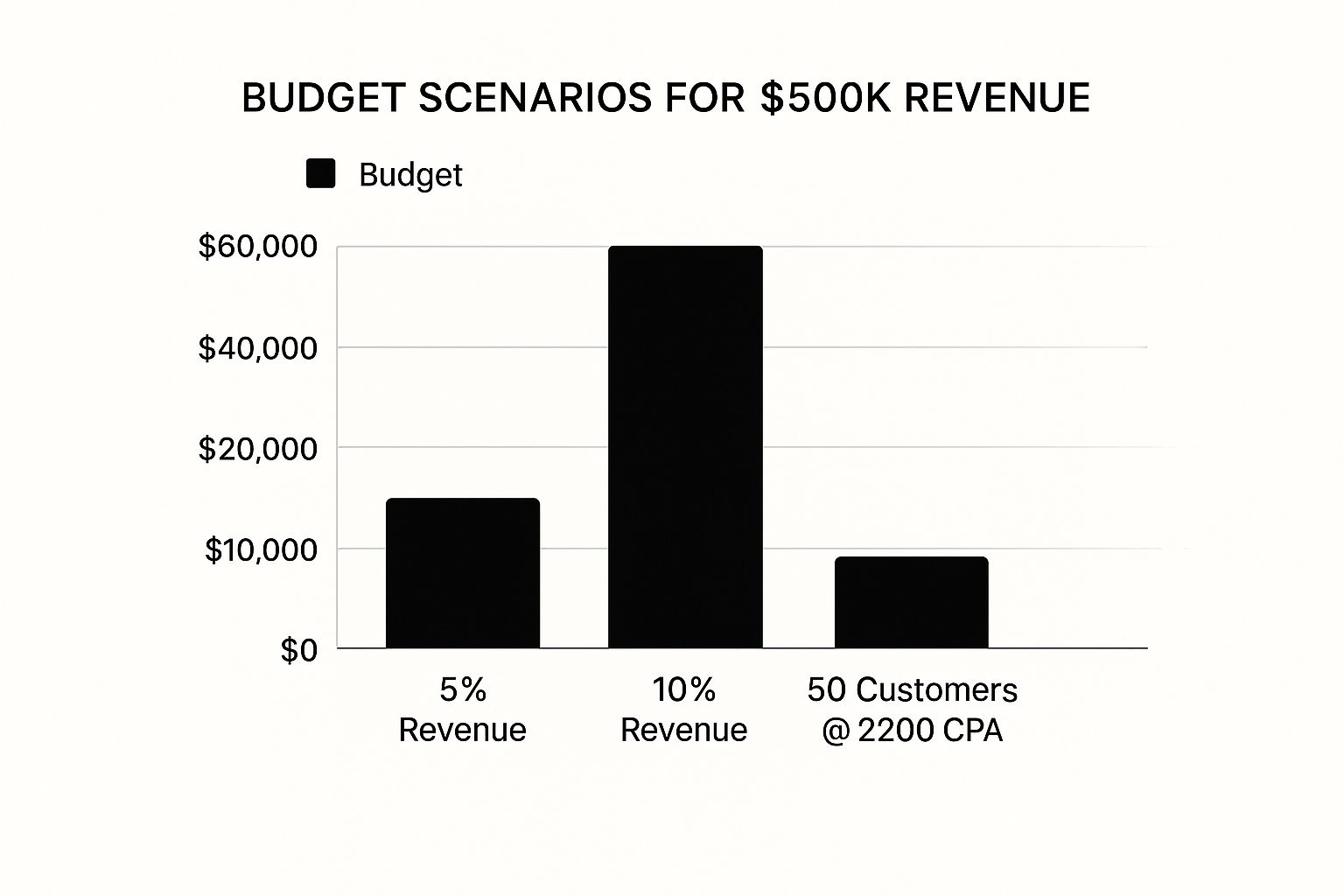
The goal-driven budget is leaner and laser-focused. It’s designed to achieve a specific outcome for less than half the cost of a standard 5% revenue allocation.
But this is just the start. A true specialist digs deeper to make sure that $10,000 is actually a realistic number. We have to factor in your sales process and website performance. If your sales team closes 25% of qualified leads, we now know exactly how many leads you need.
Leads Needed: 50 Customers / 0.25 Close Rate = 200 Leads
Target Cost Per Lead (CPL): $10,000 Budget / 200 Leads = $50 CPL
Now we have a critical KPI: can we actually generate leads for $50 each? If your website’s landing page converts visitors at a 5% rate, we can even calculate the traffic needed to hit that goal. For more advanced modeling, you can play around with our detailed Google Ads budget calculator to maximize your ROI.
This is the real advantage of working with a consultant. We don't just take your money; we build a mathematical model for your success. This completely changes your understanding of marketing from a simple expense into a predictable investment.
Of course, before diving into the numbers, having a clear direction for your spending is key. If you're still working on that, this guide on crafting a real marketing strategy for small business is a great place to start.
Where Should You Actually Spend Your Money?

Alright, you've got a number. Now for the tough part: where does that money actually go? This is exactly where most businesses stumble. It's easy to get pulled off course by large agencies that push their most profitable services or, even worse, spread your budget so thin across a dozen channels that nothing really works.
Their goal isn't always to find your highest ROI. Often, it's about activating the services that best serve their internal teams and keep their machine running. My approach is the complete opposite. We start with surgical precision, putting your money where it will generate the fastest, most tangible results.
Start with High-Intent Channels Like Google Search
Before you spend a single dime on "brand awareness," you have to capture the demand that’s already out there. Right now, as you're reading this, people are on Google actively searching for the exact solutions you provide. They aren't just scrolling through a social feed; they're motivated buyers with an immediate problem to solve.
This is why a hefty slice of your initial budget has to go to Google Search campaigns. It’s the lowest-hanging fruit and gives you the quickest, most direct path to seeing a return on your investment. By targeting keywords with real commercial intent, we get your business in front of customers at the very moment they’re ready to pull out their wallets.
An agency might try to sell you a complicated, multi-channel package from day one. A true specialist, on the other hand, builds your marketing from a solid foundation of proven, profitable results. Once you've locked in your total budget, the next move is to apply smart digital marketing budget allocation strategies to make every dollar count.
Ad Spend vs. Management Fees: A Critical Distinction
Here’s another area where a consultant provides crystal-clear value. When you work with me, your budget is broken down into two simple, transparent parts:
Ad Spend: This is the money that goes directly to platforms like Google to pay for your ads. It's your investment in media, plain and simple.
Management Fee: This is my flat-rate fee for the strategy, hands-on campaign management, relentless optimization, and clear reporting.
This model is designed for total transparency and keeps our goals perfectly aligned. My fee is the same whether you spend $2,000 or $10,000 on ads. My only incentive is to make your ad spend work as hard and efficiently as possible to maximize your return.
Now, compare that to the murky pricing structures of many large agencies. They often charge a percentage of your ad spend. If an agency takes a 15% cut, they literally make more money when you spend more money. This creates a massive conflict of interest. Is their recommendation to "increase the budget" driven by your business results or by their own revenue goals?
An agency’s percentage-of-spend model incentivizes higher spending. A consultant’s flat-fee model incentivizes better results. Choose the partner whose financial incentives are directly aligned with your success.
Sample Budget Allocation for a Local Service Business ($5,000/Month)
Let's make this real. Imagine you're a local plumber with a total monthly marketing budget of $5,000. A big agency might pitch a convoluted plan with a bit of SEO, some social media posts, content creation, and a tiny paid ads component. As a specialist, I’d recommend a much more focused and potent approach.
Here’s a practical look at how we could strategically allocate that $5,000 for maximum impact, right out of the gate.
Channel/Expense | Allocation | Purpose | Key Metric |
|---|---|---|---|
Google Search Ads | $3,500 | Capture high-intent leads from people actively searching for plumbing services. | Cost Per Lead (CPL) |
Google Local Services Ads | $500 | Generate verified, pay-per-lead phone calls in your immediate service area. | Cost Per Verified Lead |
Social Media (Experimental) | $350 | Test brand awareness and retargeting ads on platforms like Facebook. | Reach / Click-Through Rate |
Consultant Management Fee | $650 | Expert strategy, optimization, and reporting to maximize ROI on ad spend. | Return on Ad Spend (ROAS) |
This structure dedicates the vast majority of the funds—a full 80% of your ad spend—to the channels that are most likely to make the phone ring this week. The small experimental budget allows us to safely test other platforms without taking a big risk.
It's a lean, performance-driven plan designed for one thing: growth. It's not designed to keep an agency's various departments busy.
Build Your Performance Tracking System
A marketing budget without a solid tracking system is just a list of expensive wishes.
This is single-handedly the biggest failure I see when clients come to me after a bad experience with a big agency. They're handed reports filled with impressive-sounding but ultimately hollow numbers like impressions, clicks, and click-through rates. These are vanity metrics, and they do a great job of justifying an agency’s fees but a terrible job of telling you if you’re actually making any money.
My focus is completely different. We don’t measure activity; we measure profitability. To do that, we need a simple yet powerful tracking system built around the metrics that actually matter to your bottom line.
Focus on Metrics That Drive Profit
Forget the fluff. For a small or medium-sized business, your success really comes down to a few core key performance indicators (KPIs). These are the numbers that connect your ad spend directly to your bank account.
Customer Acquisition Cost (CAC): This is the total cost to land one new paying customer. It tells you exactly how much you can afford to spend and still turn a profit.
Return on Ad Spend (ROAS): For every dollar you put into ads, how many dollars in revenue do you get back? This is the ultimate measure of whether your campaigns are working.
Lead-to-Close Rate: Of all the leads your marketing generates, what percentage actually become paying customers? This metric reveals the quality of your leads and the health of your sales process.
Large, bloated agencies often avoid focusing on these metrics because they expose inefficiencies. My entire approach is built on them because they prove my value and make your budget smarter.
Your budget is only as good as the data you use to manage it. Measuring profit, not just clicks, is the fundamental shift that separates a specialist's approach from an agency's. It ensures every dollar is an investment in growth, not an expense to be justified.
Setting Up Essential Conversion Tracking
To get these critical numbers, you have to track what happens after someone clicks on your ad. This is where we set up conversion tracking—the technical backbone of a performance-focused budget. Don't let the term intimidate you; it's the most important thing you can do to understand your real ROI.
We'll start with the essentials in Google Ads and Google Analytics. The goal is to see exactly which campaigns, ad groups, and keywords are driving real actions from potential customers, like phone calls and contact form submissions.
But a common mistake is stopping there. A lead is great, but it's not a sale. This is why our tracking system needs to go one step further. To truly understand how to measure advertising effectiveness, you must connect your ad data to your actual sales data.
Closing the Loop From Click to Customer
This is where so many agencies drop the ball. They generate the lead, and in their minds, the job is done. As a consultant invested in your success, my job isn’t done until that lead becomes a customer and you see a positive return.
To do this, we create a simple feedback loop. You don’t need a fancy, expensive CRM system to get started, either. A simple spreadsheet can work wonders.
Here’s the process I implement with my clients:
Tag Every Lead: When a new lead comes in from a Google Ad (a call or a form fill), we make sure it’s tagged with its source. We know which campaign and keyword brought them to you.
Track the Sales Journey: In your spreadsheet or CRM, you'll update the status of that lead as it moves through your sales process—from "Contacted" to "Quote Sent" to "Closed-Won" or "Closed-Lost."
Calculate the Real ROI: At the end of the month, we can look at the "Closed-Won" leads and see exactly how much revenue came from specific campaigns. Now we can calculate our true CAC and ROAS.
This simple system transforms your marketing budget from a static document into a dynamic, intelligent tool. You’ll know with certainty that Campaign A generates high-quality leads that close at 25%, while Campaign B drives a ton of cheap clicks but almost no sales.
With that kind of insight, we can confidently shift your budget away from the loser and double down on the winner, making your marketing more profitable, month after month.
Optimize and Adapt Your Budget Over Time

Here's a hard truth most people won't tell you about building a marketing budget: it’s never actually finished. The most effective budgets aren't static spreadsheets you create once a year and then bury in a folder. They are living, breathing documents that we have to monitor, challenge, and adjust based on real performance data.
This is the agile optimization process that separates campaigns that drive consistent growth from those that just stagnate and burn cash. It’s also where the difference between working with a hands-on consultant and a big agency becomes crystal clear.
Big agencies, with all their layers of management and rigid quarterly plans, are notoriously slow to react. Shifting budget from one campaign to another can require a chain of meetings and approvals, wasting precious time and opportunity. My process is built for speed. I’m in your account daily, and we can make smart adjustments on a single phone call, making sure your marketing dollars are always working as hard as possible for you.
Applying the 70-20-10 Rule for Smart Growth
To bring some structure to this dynamic process, I lean on a framework called the 70-20-10 rule. It’s a simple but incredibly powerful way to allocate resources that balances reliable results with calculated innovation. This model keeps you from getting too conservative while protecting you from reckless spending.
Here’s the breakdown:
70% to Proven Winners: The biggest slice of your budget goes to the campaigns and channels that are already delivering. These are your workhorses—the Google Search campaigns with a killer cost-per-acquisition or the specific ad groups driving your most valuable leads. We protect and fund what works.
20% to Promising Opportunities: This part is for scaling up strategies that are showing early signs of life. Maybe a new keyword theme is bringing in leads at a good price, or a specific audience segment is responding really well. This is where we double down to see if we can turn a small win into a major growth driver.
10% to Pure Experimentation: This last slice is your R&D fund. It’s where we test bold new ideas: a new ad platform, a different bidding strategy, or going after an entirely new audience. Most of these tests might not pan out, but the one that does could become your next big winner and graduate into the 20% or even 70% bucket.
An agency might be hesitant to "fail" with 10% of your budget because it doesn't look great on a report. As your consultant, I see that 10% as a critical investment in your future growth. It lets us stay ahead of the curve and uncover untapped opportunities before your competitors do.
This balanced approach ensures your core business is always funded by reliable performers while you’re systematically exploring new ways to expand. It's the kind of strategic agility that large, bureaucratic organizations just can't match.
The Power of Monthly Budget Reviews
The 70-20-10 rule is only effective if you’re actively analyzing performance and making informed calls. This is exactly why conducting monthly budget reviews is non-negotiable. It’s our dedicated time to dig into the data and ask the tough questions.
In these reviews, we’re not just glancing at clicks and impressions. We’re diving deep into the metrics that actually matter—like ROAS and CAC—to understand the real story behind the numbers. For instance, figuring out which campaigns truly contribute to sales requires a solid grasp of the customer journey. You can check out a consultant's guide to attribution modeling vs. agency hype to see how we track this without the fluff.
This review process is where we make the critical adjustments. We’ll be asking questions like:
Did our experimental campaigns in the 10% bucket show any promise, or should we cut our losses and test something new?
Is that promising campaign in the 20% bucket ready to be scaled up and moved into the core 70%?
Has performance slipped in one of our "proven winner" campaigns? Does it need to be re-evaluated or moved down?
This continuous cycle of analyzing, deciding, and acting is what transforms your budget from a simple expense line into a powerful tool for growth. It’s a hands-on, collaborative process that ensures we're never flying blind.
A Few Common Questions I Get About Marketing Budgets
When I sit down with business owners, the same handful of questions about building a marketing budget almost always come up. Let's get right to them—here are my straight-up answers based on years of getting real-world results, not padding agency overhead.
How Much Should a Small Business Actually Spend on Marketing?
You'll hear the old rule of thumb everywhere: spend 5-12% of your total revenue. The idea is that newer, aggressive brands should push toward the high end of that, while established companies can cruise at the lower end.
But honestly, a flat percentage is a pretty blunt instrument. A much smarter way to operate is with a goal-based model. We figure out exactly what you want to achieve—let's say it's landing 50 new customers this quarter—and then we work backward to calculate the ad spend needed to make that happen. This way, every single dollar is tied to a tangible, profitable outcome. It’s a far more precise strategy than just picking an arbitrary number.
Why Hire a Consultant Instead of a Big Agency?
It really boils down to two things: alignment and overhead. A big, full-service agency has a ton of costs to cover—huge teams, fancy offices, layers of account managers—and guess who pays for all that? You do. On top of that, many use a percentage-of-spend fee model, which gives them a direct incentive to get you to spend more, not necessarily to get you better results.
My model is the complete opposite. As an independent consultant, my structure is lean, and I work on a flat fee. The only way I succeed is by making you successful. My entire focus is on maximizing your return on ad spend (ROAS) because my reputation and business depend on it. Your success is my success, plain and simple.
So, the choice is pretty clear: Do you want to pay for an agency's bloated structure, or do you want to pay an expert for performance? A consultant’s success is directly tied to yours. We’re in it together.
What's the Biggest Budgeting Mistake You See?
Hands down, the biggest mistake is the "set it and forget it" mentality. Your marketing budget isn't some static document you draft in January and file away. It needs to be a living, breathing tool that adapts to what the data is telling you.
The digital ad space moves fast. You absolutely have to be reviewing performance and shifting funds around at least once a month. My job is to keep you agile, so we can pull money from campaigns that are fizzling out and double down on the ones that are printing money. This kind of active management makes sure no dollar is ever wasted on a tactic that’s stopped working.
What's a Realistic Timeframe to See ROI?
I get it, you want results yesterday. While some high-intent channels like Google Search can start bringing in leads within a few days, you really need a 90-day window to get a true read on the effectiveness of a new marketing budget.
Think of it as a three-month ramp-up:
Month 1: This is all about launch. We get campaigns live, start gathering that crucial baseline data, and see what our initial performance benchmarks look like.
Month 2: Now we get to work optimizing. We take the data from the first month and start making intelligent tweaks to improve efficiency and lower costs.
Month 3: By this point, the fog has cleared. You should have a solid understanding of your core KPIs, like your true cost per lead and your actual return on ad spend.
After that 90-day cycle, you'll have the hard data and the confidence you need to make smart decisions about scaling up for predictable, long-term growth.
Ready to build a marketing budget that actually drives growth, not just agency fees? As an expert Google Ads consultant, Come Together Media LLC specializes in creating lean, powerful PPC strategies that connect every dollar to a real business outcome. Schedule your free, no-commitment consultation today to see how a specialist's approach can maximize your return on ad spend.





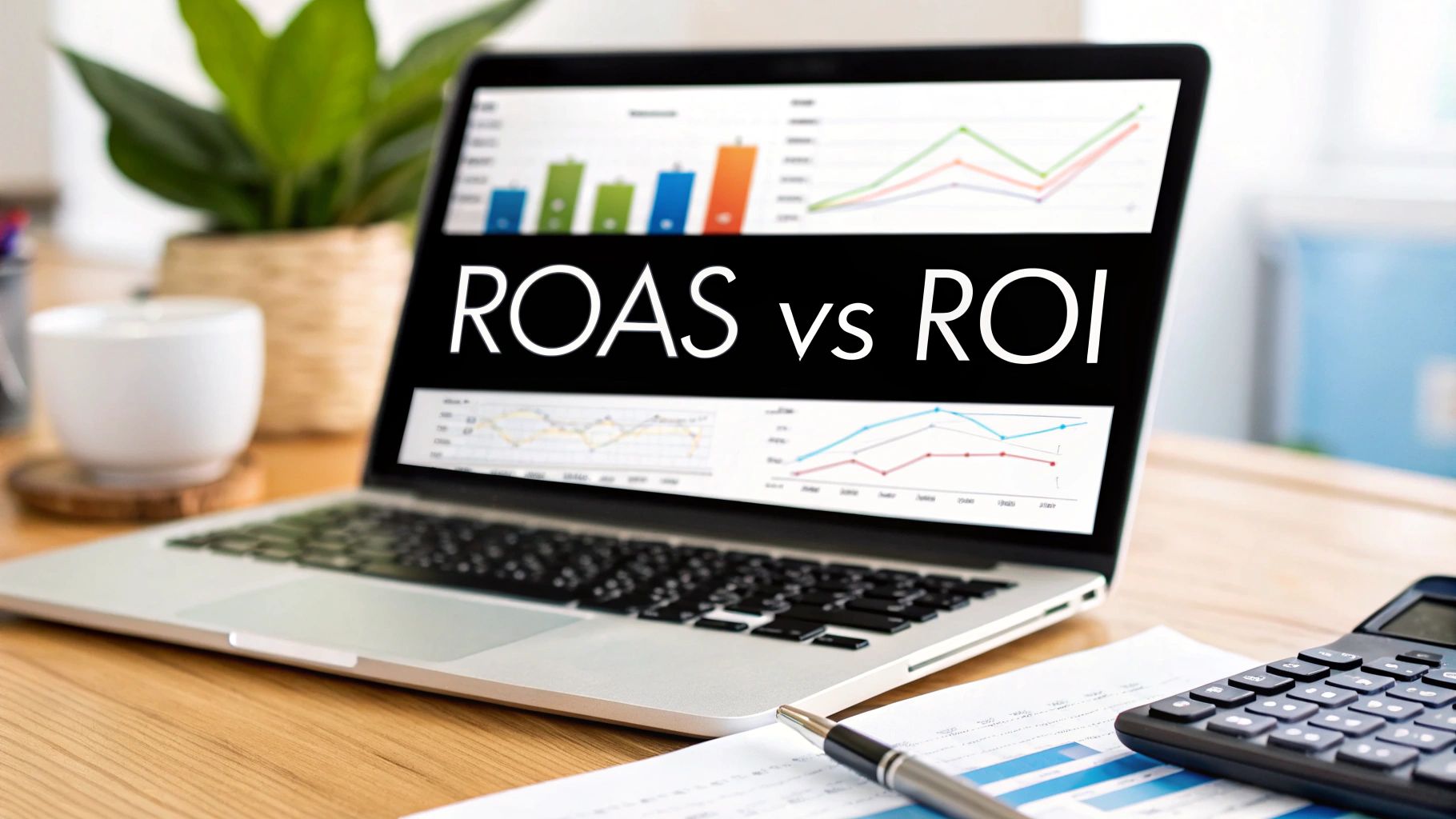
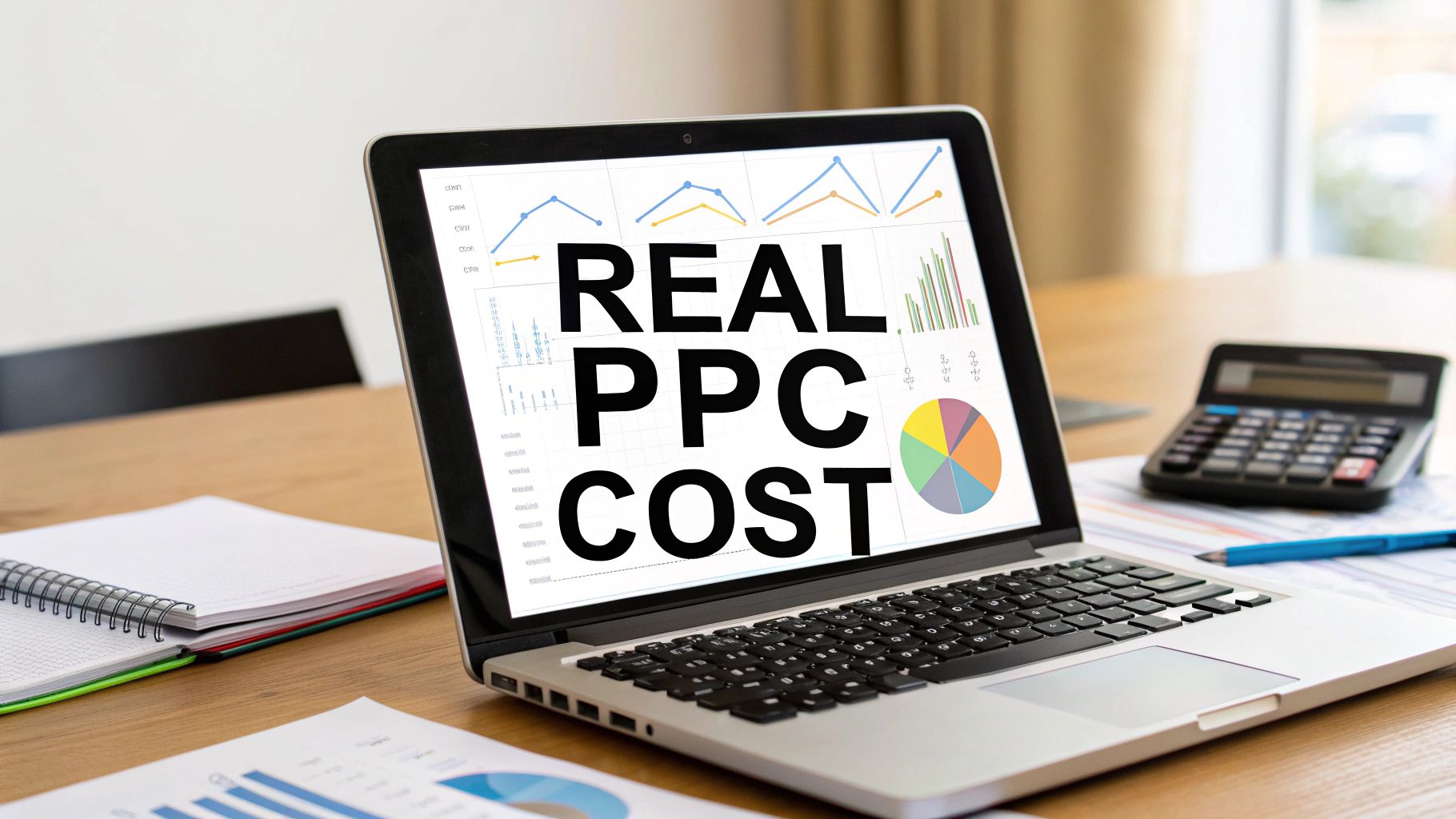
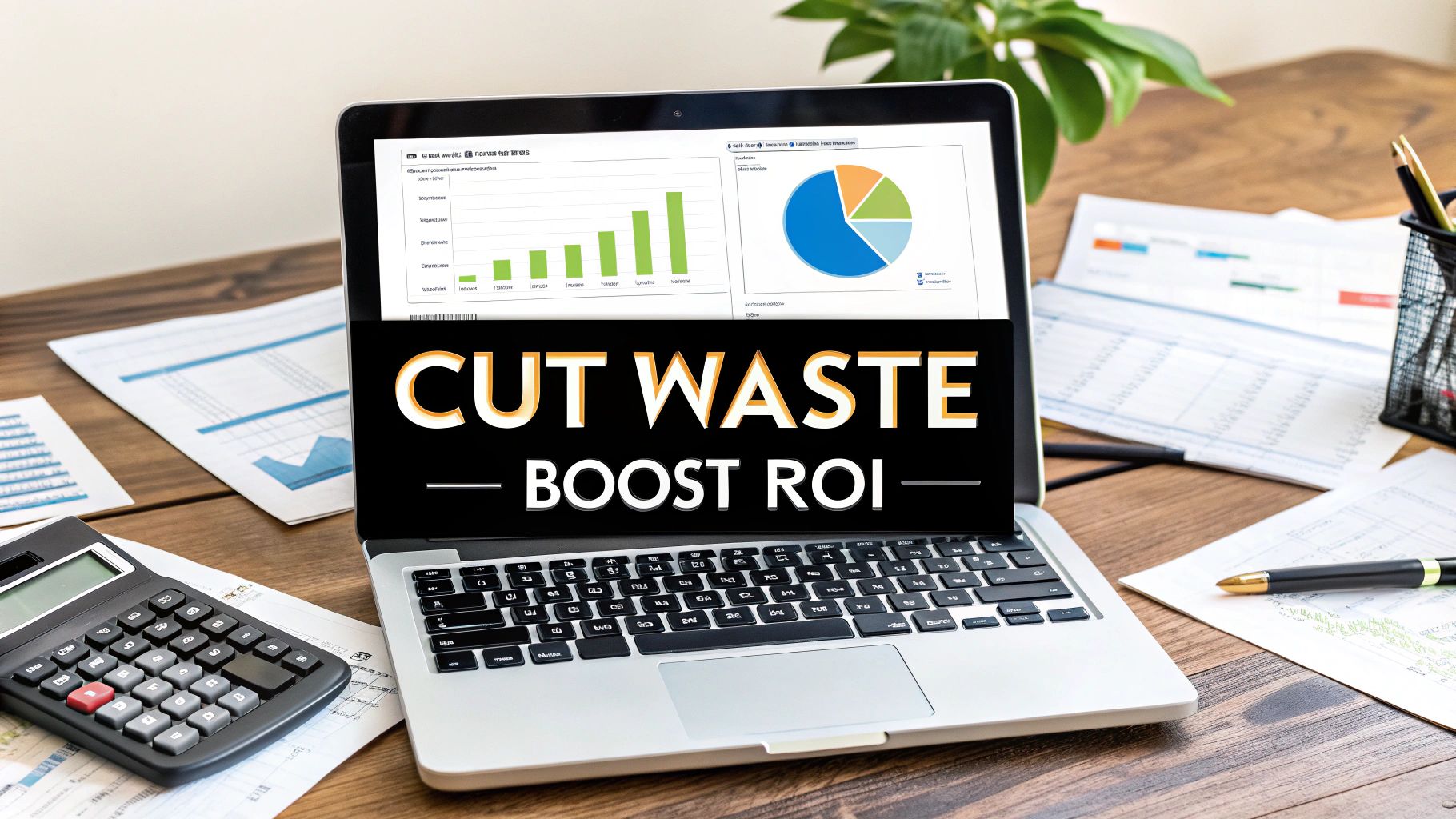
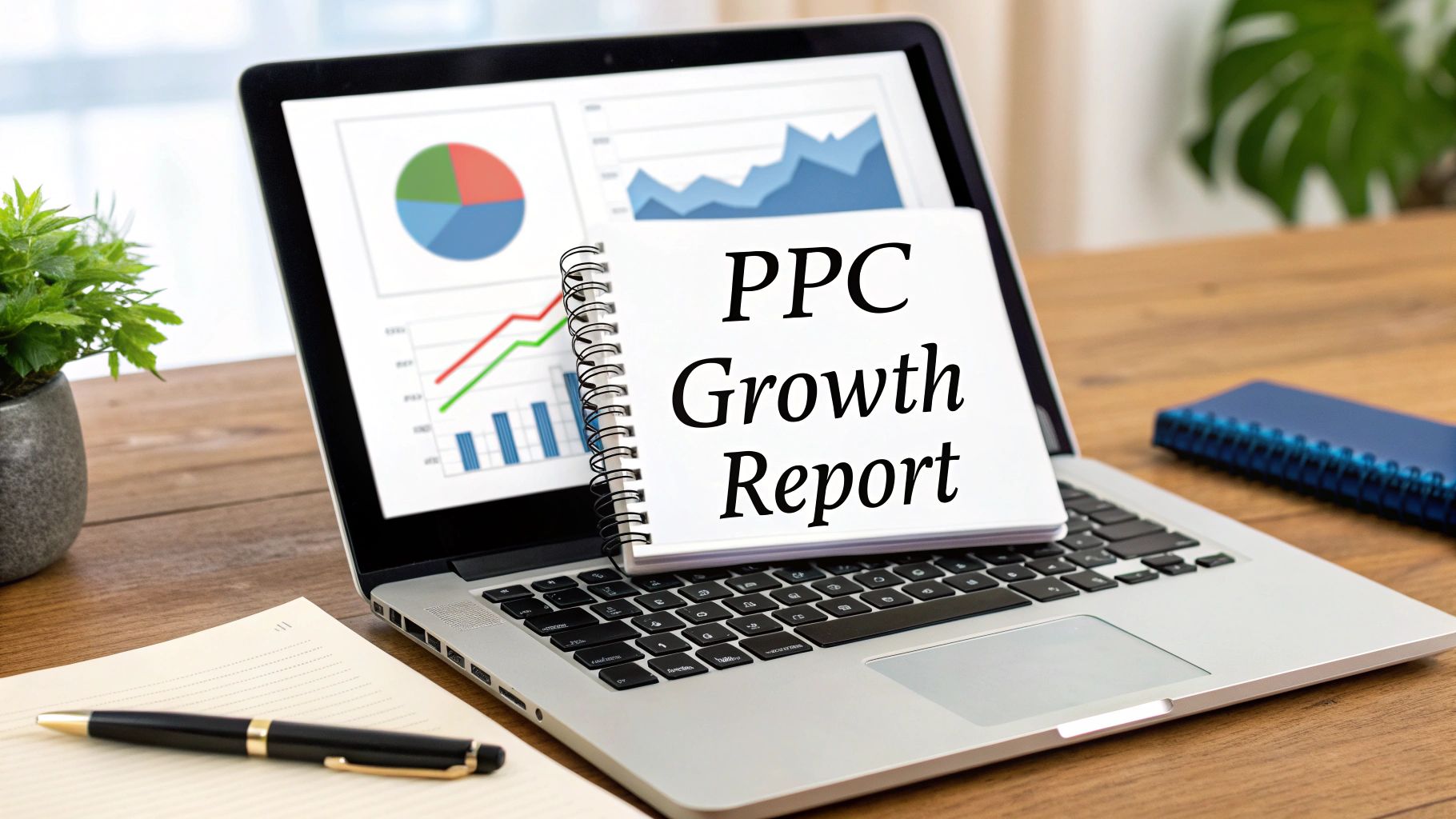
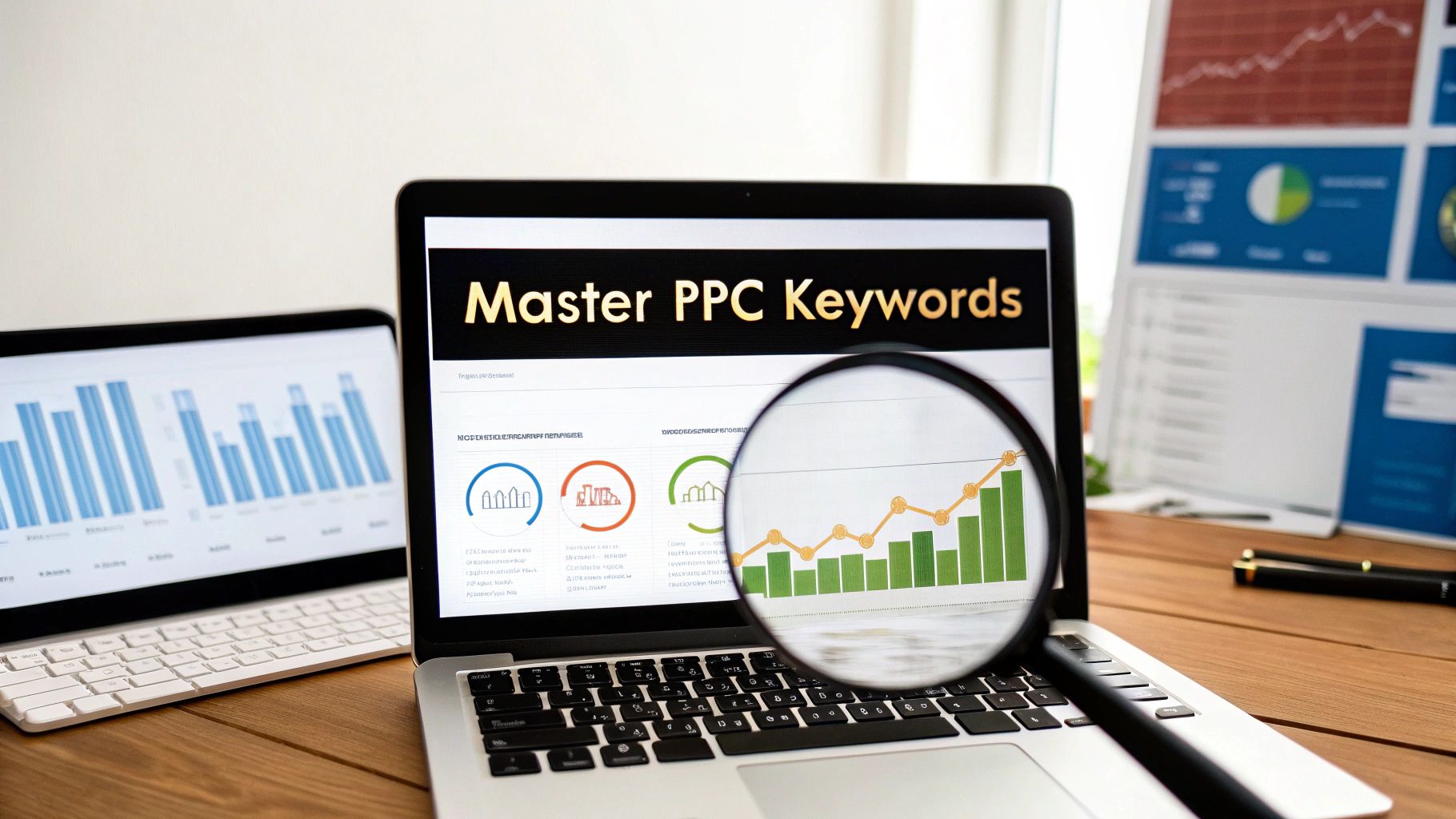
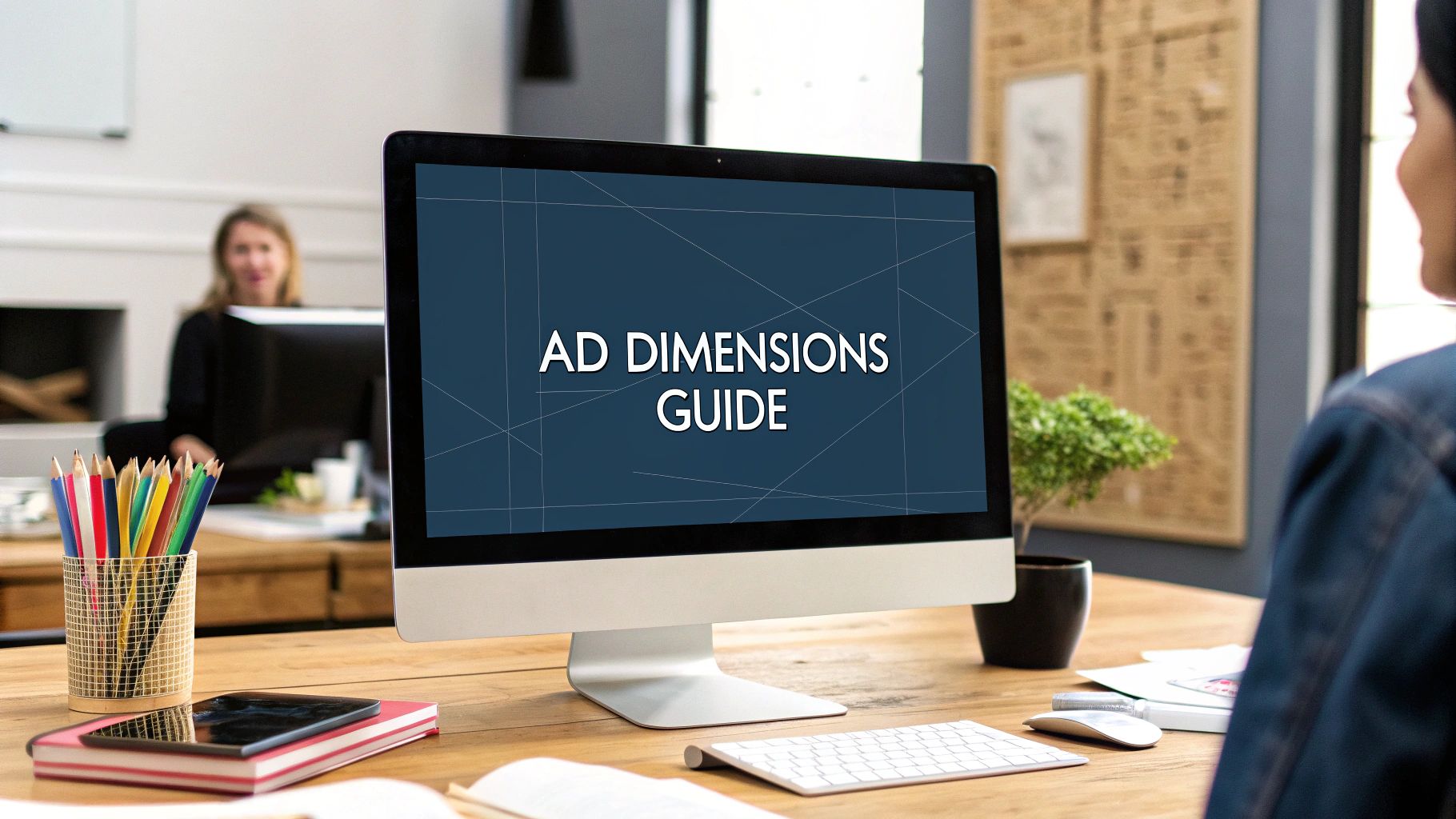
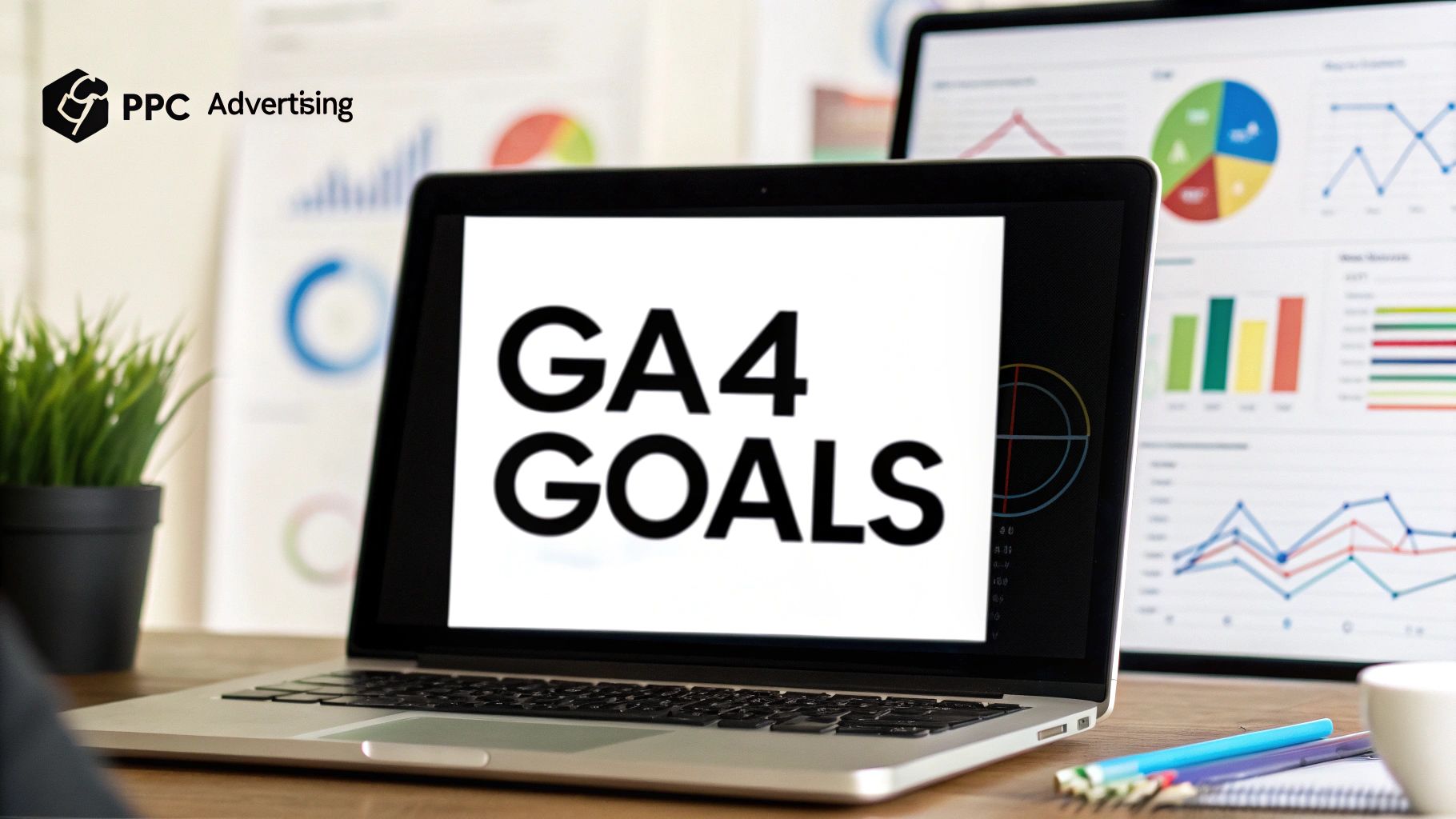
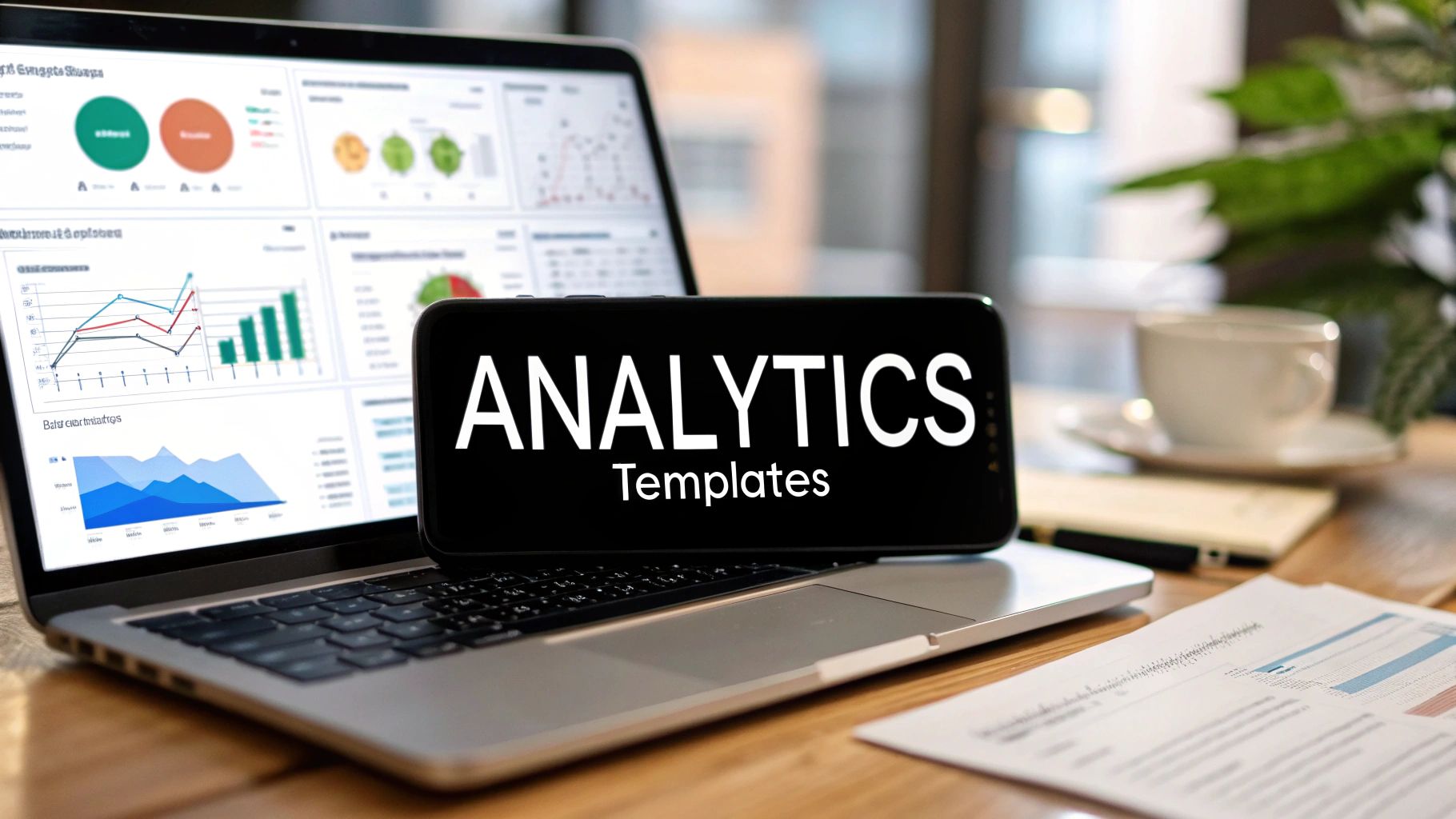
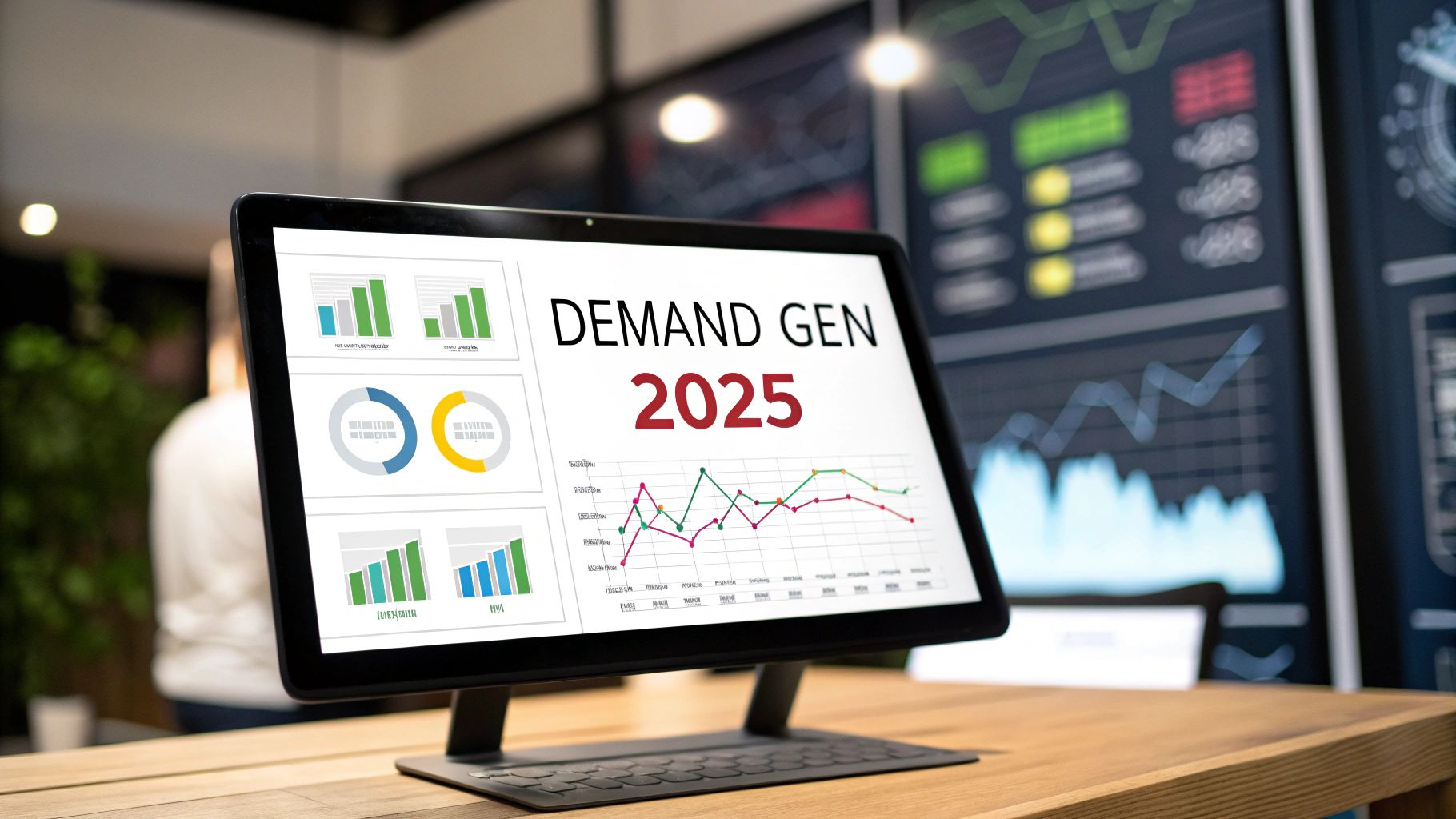
Comments